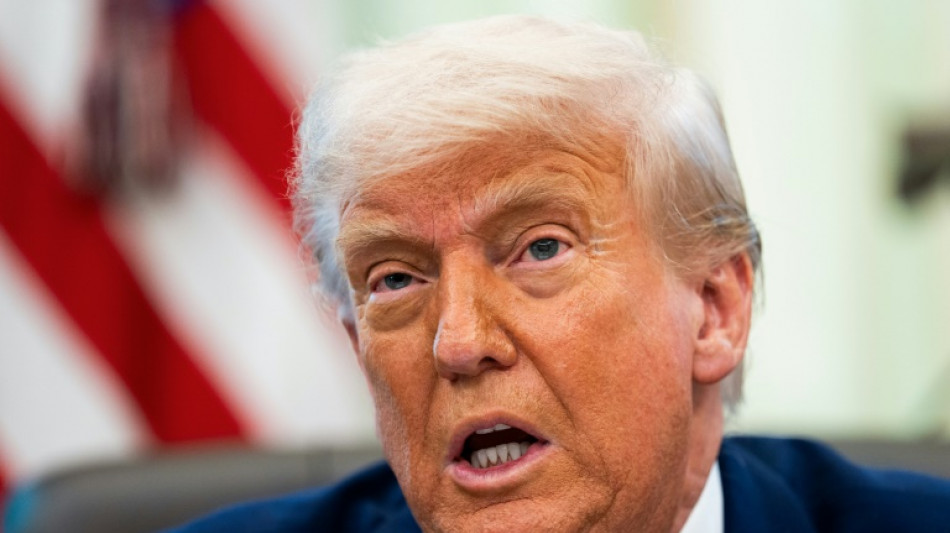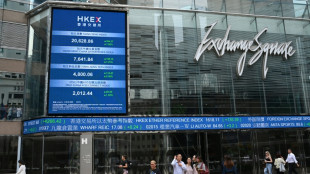
| RYCEF | 7.62% | 14.18 | $ | |
| CMSC | 0.15% | 22.634 | $ | |
| SCS | -0.34% | 10.295 | $ | |
| RBGPF | 0.52% | 74.42 | $ | |
| SCU | 0% | 12.72 | $ | |
| VOD | -2.22% | 10.82 | $ | |
| NGG | 0.11% | 70.27 | $ | |
| BTI | 1.35% | 53.885 | $ | |
| RIO | 0.46% | 59.765 | $ | |
| GSK | -4.25% | 37.38 | $ | |
| BCC | -1.29% | 83.805 | $ | |
| BP | -0.5% | 32.09 | $ | |
| JRI | 0.04% | 13.115 | $ | |
| RELX | 0.14% | 51.85 | $ | |
| CMSD | 0.6% | 23.2 | $ | |
| BCE | -0.53% | 23.405 | $ | |
| AZN | -4.22% | 73.49 | $ |

US private sector hiring sharply slows, drawing Trump ire
US private sector hiring hit its slowest pace since 2023 in May, according to data Wednesday from payroll firm ADP, significantly missing expectations in a month where all eyes are on the effects of President Donald Trump's trade war.
Private sector employment rose by 37,000 jobs last month, slowing from the 60,000 figure in April.
Trump immediately reacted by pressuring independent Federal Reserve Chair Jerome Powell to cut interest rates.
"'Too Late' Powell must now LOWER THE RATE," Trump said on his Truth Social platform.
While the US central bank has started bringing down rates from the high levels of recent years, officials have proceeded cautiously as they monitor progress in cooling stubborn inflation.
When inflation is low, central banks may opt to reduce rates, which typically encourages economic activity by reducing borrowing costs.
But Trump's frustration comes at a time when "hiring is losing momentum" after a strong start to this year, according to ADP chief economist Nela Richardson.
She added in a statement that pay growth was also "little changed in May."
Service-providing sectors like leisure and hospitality, as well as financial activities, still logged gains, according to the ADP report.
Goods-producing industries saw a net loss in jobs last month, with employment declining in mining and manufacturing.
Some service sectors also saw job losses, including trade and transportation, as well as business services and education or health services.
Meanwhile, pay growth for those who remained in their jobs was little-changed at 4.5 percent.
For those who switched jobs, pay growth was 7.0 percent.
Analysts are keeping a close eye on US economic data this week, with official US employment figures also due on Friday.
While ADP figures may diverge from the government numbers, experts are keeping tabs on the effects of Trump's global tariffs as they sweep through the world's biggest economy.
Since returning to the presidency, Trump has slapped a 10 percent tariff on most trading partners, alongside higher rates on dozens of economies including the European Union which have since been put on pause until early July.
He has also taken special aim at China with tit-for-tat tariffs between Washington and Beijing reaching three-figures before both sides reached a temporary deal to lower levels last month.
But the seesawing of Trump's trade policies has snarled supply chains, roiled financial markets and weighed on consumer sentiment.
"Manufacturing employment is suffering from higher input costs and disruptions to supply chains. At least one vehicle producer was forced to idle production during the first half of May; that is reminiscent of the pandemic," warned KPMG chief economist Diane Swonk in a recent note.
E.Bansal--MT




